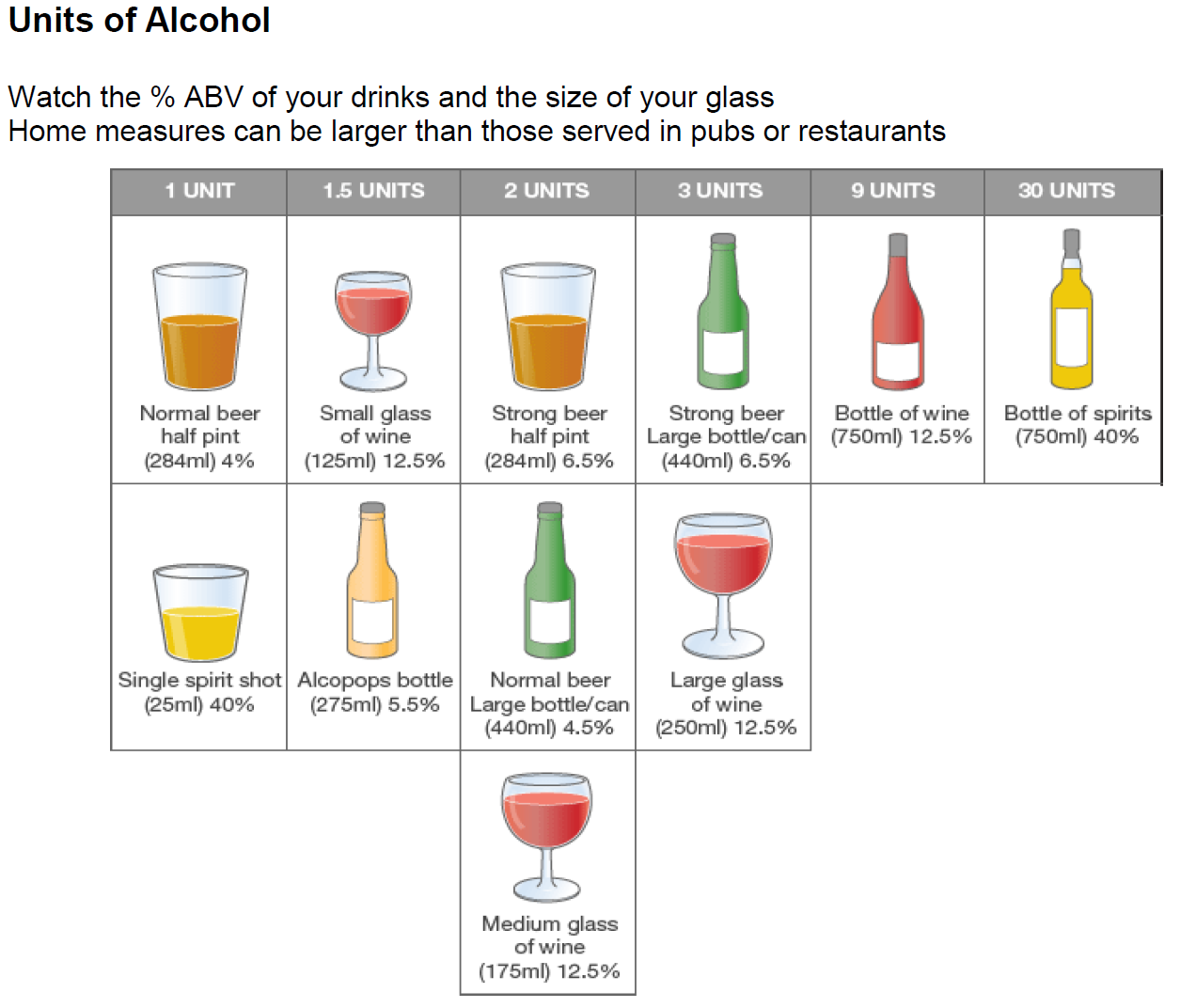Alcohol units
These are measures related to the alcoholic content of different drinks. A unit of alcohol is 10ml of pure ethanol - that is, near enough 8g of alcohol (equivalent to 10 mL of pure ethanol) (1).
Calculating units of alcohol:
- alcohol by volume or ABV is used to measure the amount of pure alcohol as a percentage of the total volume of liquid in a drink
- number of units in a drink = total volume of a drink ( in milllitres) x ABV (%)/ 1000
- units calculator to find out how many units there are in a single drink or in a number of drinks is available at http://www.nhs.uk/Tools/Pages/Alcohol-unit-calculator.aspx
- the amount of units will vary based on different preparations of beer/lager. Some additional information regarding units of alcohol with respect to different beverages is presented below (2):
- a pint of ordinary strength lager (Carling Black Label, Fosters) - 2 units
- a pint of strong lager (Stella Artois, Kronenbourg 1664) - 3 units
- a pint of ordinary bitter (John Smith's, Boddingtons) - 2 units
- a pint of best bitter (Fuller's ESB, Young's Special) - 3 units
- cider
- a pint of ordinary strength cider (Woodpecker) - 2 units
- a pint of strong cider (Dry Blackthorn, Strongbow) - 3 units
- one small (125 ml) glass of wine at 9% is one unit - however a 175ml glass of red or white wine is around 2 units
- an alcopop (eg Smirnoff Ice, Bacardi Breezer, WKD, Reef) - around 1.5 units
- one small sherry 1 unit
- one measure of spirit 1 unit
- one bottle of vodka 32 units
- today the labels of many bottled drinks will tell you how many units of alcohol are in the bottle
Emphasising relationship between %ABV and volume of alcohol consumed (3):

Reference:
- Day E, Copello A, Hull M. Assessment and management of alcohol use disorders. BMJ. 2015;350:h715
- Department of Health (May 2007). Alcohol and health
- Western Sussex Hospitals NHS Foundation Trust. Food Fact - Diabetes and Alcohol.
Related pages
Create an account to add page annotations
Annotations allow you to add information to this page that would be handy to have on hand during a consultation. E.g. a website or number. This information will always show when you visit this page.